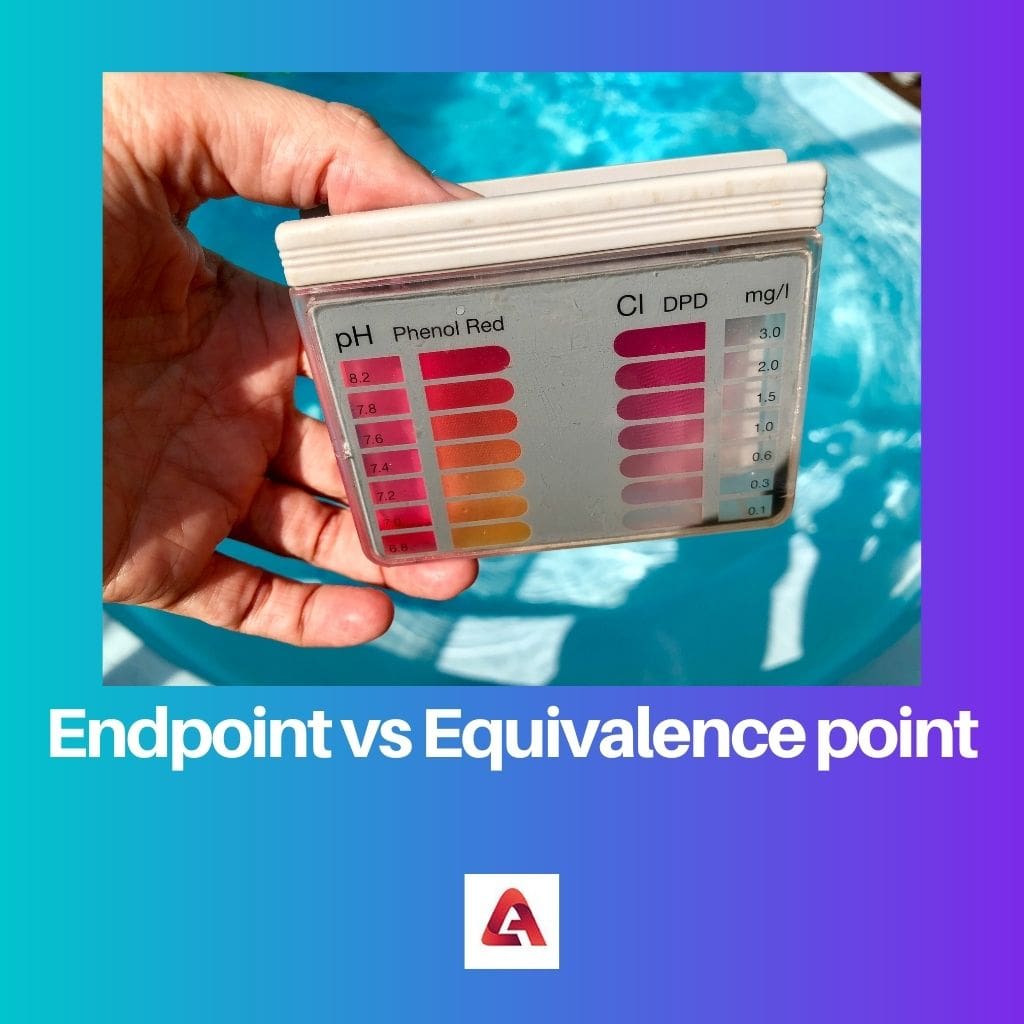In the realm of analytical chemistry, the determination of an unknown substance’s concentration plays a crucial role. Titration, a fundamental technique employed by chemists, allows us to precisely measure the amount of a substance present in a sample by carefully adding a known concentration of another substance. Understanding the concepts of equivalence point and endpoint is critical in successful titration.

Image: www.vrogue.co
Equivalence Point: The Theoretical Ideal
The equivalence point represents the theoretical ideal point in a titration where the moles of the titrant (the added solution) are exactly equal to the moles of the analyte (the unknown substance being analyzed). At this point, the reaction between the titrant and the analyte is complete, and the indicator (a substance that changes color at or near the equivalence point) changes color, indicating the endpoint of the titration. The equivalence point is critical as it provides the stoichiometrically correct amount of titrant needed to completely react with the analyte.
Endpoint: The Practical Measurement
In real-world applications, determining the exact equivalence point can be challenging. Instead, we rely on the endpoint as the practical measurement of completion. The endpoint is the point at which the indicator changes color, as visually observed by the person performing the titration. However, due to the nature of indicators and the gradual change in solution color, the endpoint may not always perfectly align with the equivalence point, leading to a slight difference in the measured concentration.
Factors Influencing Equivalence Point and Endpoint
Several factors can influence the difference between the equivalence point and the endpoint:
Indicator Strength: Different indicators have varying strengths, which can affect the sensitivity and precision of the endpoint detection.
Titration Rate: Rapid titration can lead to overshooting the equivalence point, while a slower rate provides more time for the indicator to reach its correct color change.
Temperature: Temperature can impact equilibrium positions, affecting the indicator’s color change and the equilibrium of the titration reaction.
Solution Concentration: The concentrations of the titrant and analyte can influence how far the indicator deviates from the equivalence point at the endpoint.

Image: differencesfinder.com
Minimizing Discrepancies between Equivalence Point and Endpoint
To minimize discrepancies between the equivalence point and the endpoint, the following strategies can be employed:
Choice of Indicator: Select an indicator that has a color change near or at the equivalence point of the titration.
Controlled Titration Rate: Titrate slowly and carefully to ensure the indicator has sufficient time to reach its color change point.
Temperature Control: Maintain a constant temperature throughout the titration to reduce temperature-induced variations.
Minimizing Concentration Deviations: Use concentrations that produce the most accurate and precise results within the indicator’s color change range.
Difference Between Equivalence Point And End Point
Conclusion
Understanding the difference between the equivalence point and endpoint is fundamental to accurate and efficient titrations. By recognizing the factors that influence their discrepancy and employing proper methodologies, we can minimize inaccuracies and enhance the reliability of our analytical results. The concepts of equivalence point and endpoint continue to play a vital role in countless laboratory applications, guiding us toward a deeper understanding of the world around us.